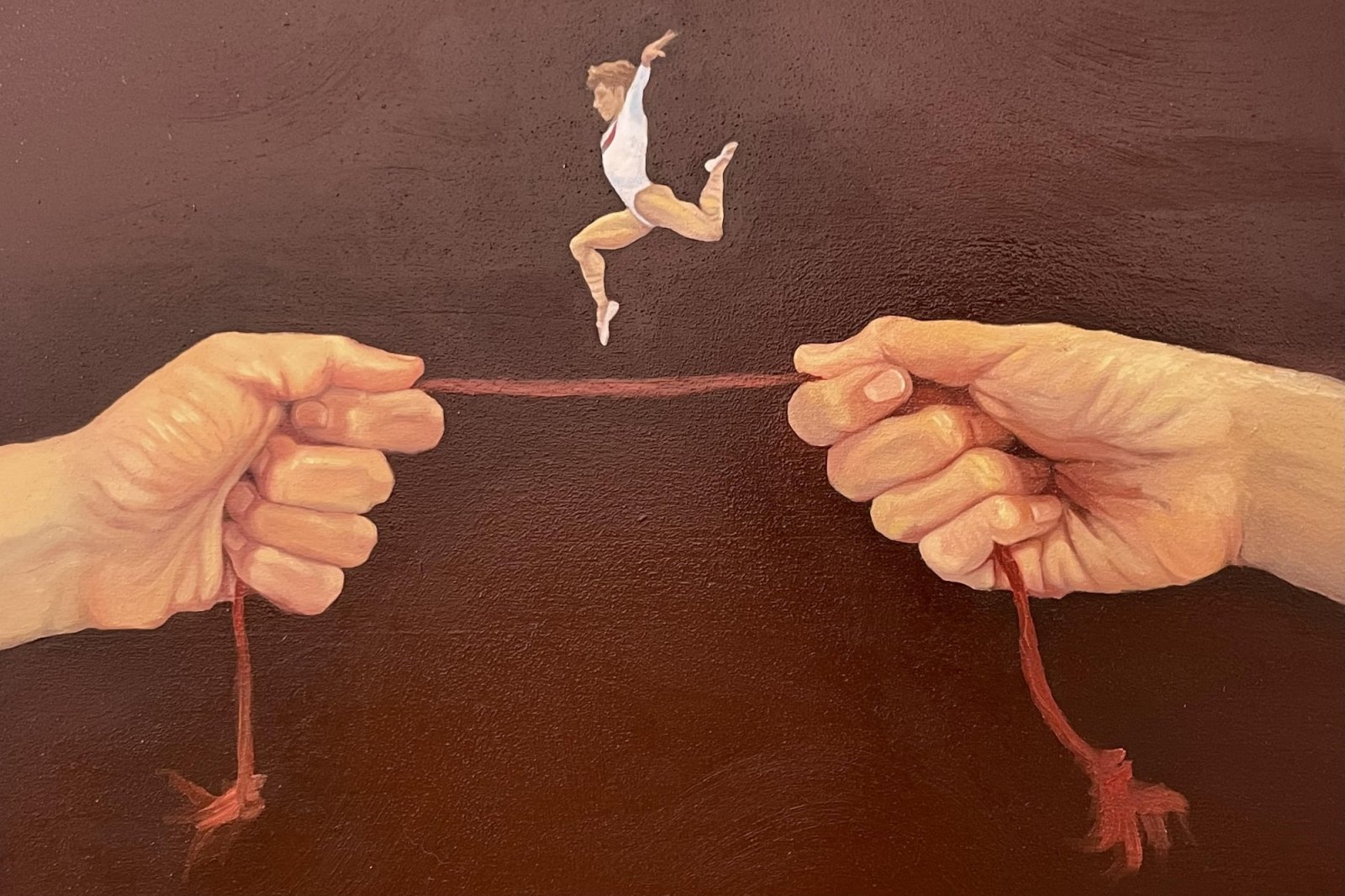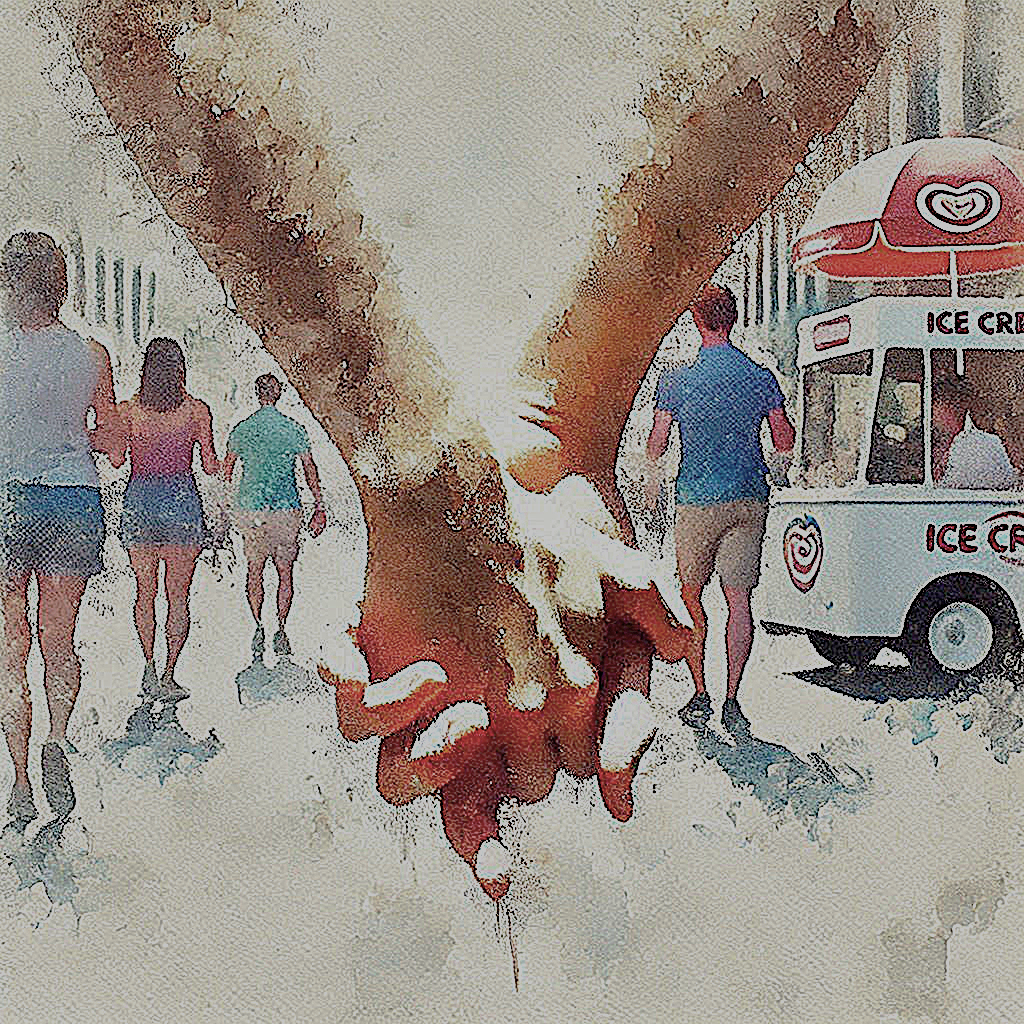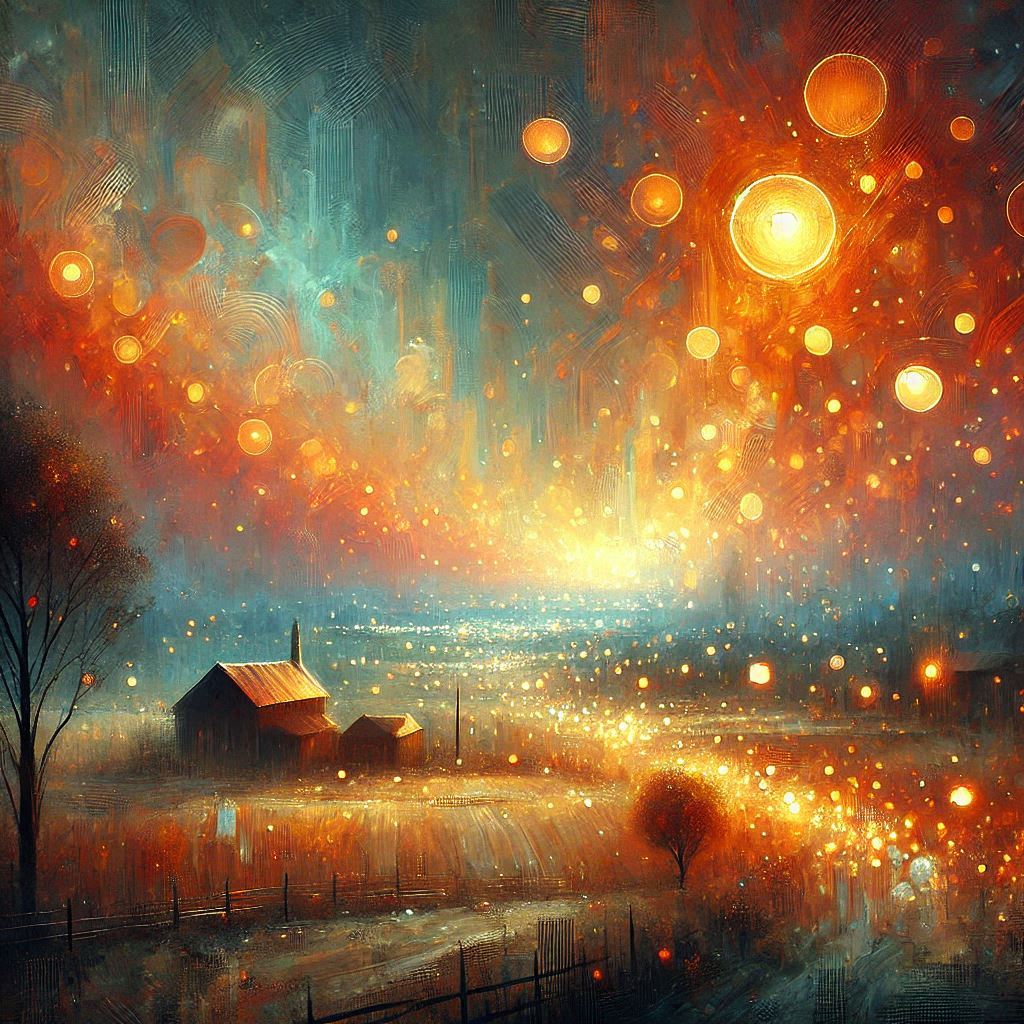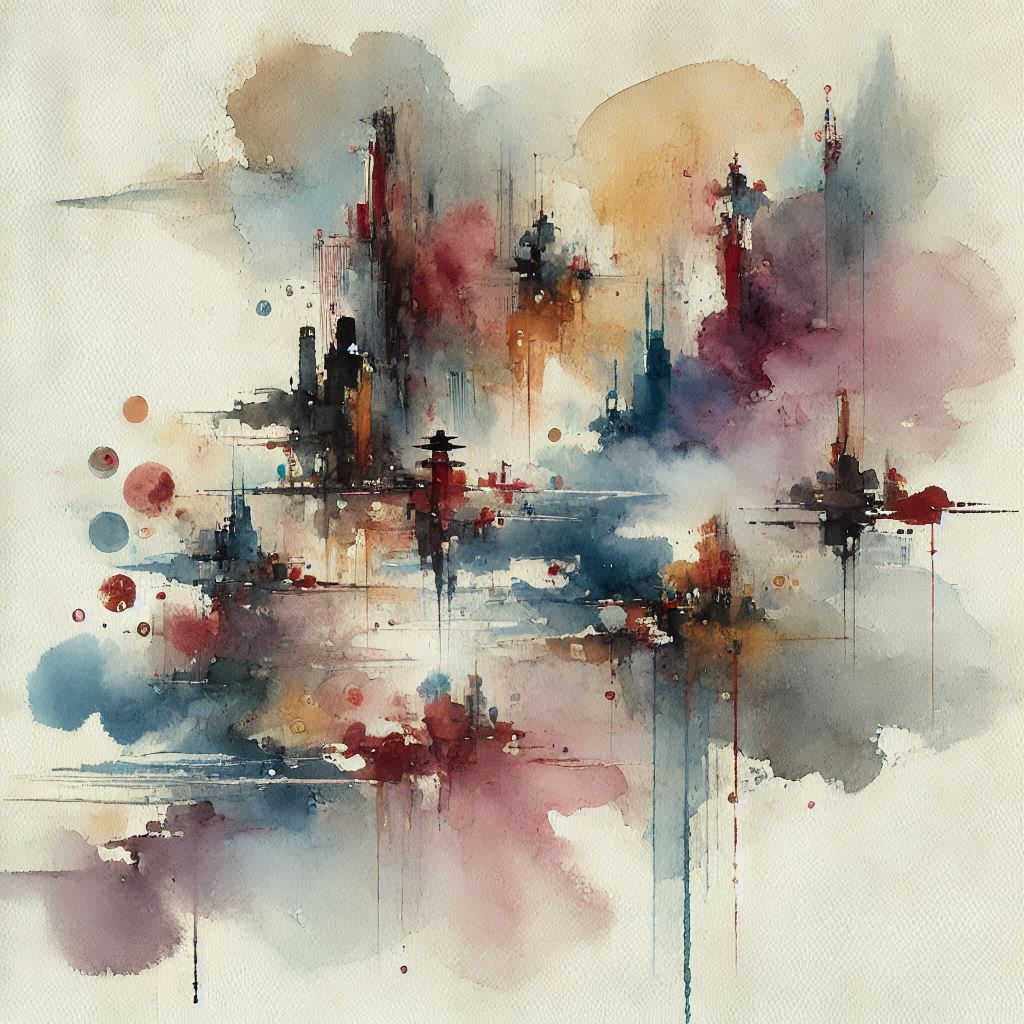
The Vault
I should have known, after watching the 1996 Summer Olympics, that television would be trouble.
Eleven years old, I sat on my parents’ bed and watched on a 12-inch television because someone was—inexplicably, to me—watching something else on the big boxy TV in our living room. The image was slightly blurred, but I watched as Dominique Moceanu tried to win the United States its first-ever gold medal in the team competition in women’s artistic gymnastics but failed by falling on both of her vaults. Then came Kerri Strug, who did the same on her first pass.
Most people know what happened next; the magnificent seven have been sports icons for over twenty years. Prior to the Rio games in 2016, Strug’s second vault—during which she overcame what would turn out to be a broken bone—was re-aired as an “Epic Moment” on NBC over and over; you can hear Béla Károlyi yelling, “You can do it,” while thousands of Americans scream and cheer her on, the attendant crowd equal parts stunned silent and absolute pandemonium when she lands and then, immediately after raising her arms to complete the vault, she falls to her knees, scowling.
Since then, and thanks to the brave way that Simone Biles stepped away from competition during the delayed 2020 games in Tokyo last year, people have revisited that vault and the way Kerri Strug was treated, the pressure put upon her to compete with a broken leg, and the way we, as Americans—as human beings—valorize competition over just about everything else. Kerri Strug was put in a position where she had no choice: be a hero. There was no or, because the possibility of not completing her second vault wasn’t an option, not to her, not to her coaches, not to the thousands of shrieking, clapping spectators.
But eleven-year-old me didn’t think of any of that. Eleven-year-old me was caught up in a different story. This “story” is both truth and fiction. It is fiction because the events never happened anywhere except inside my head. It is truth because it is the story of what I wanted and wished for in the aftermath of the 1996 Olympics, which were marred by the Centennial Olympic Park bombing, an event I had largely forgotten about before I thought about writing this. I had forgotten about the death of Alice Hawthorne and the injuries sustained by over one hundred others. I had forgotten that security guard Richard Jewell, the hero who probably saved many lives by discovering the bomb in the first place, was falsely accused of being the bomber and was subjected to a media assault and had his home sieged despite the fact that he was simply doing his job.
I forgot all of this for two reasons: first, my parents were probably diligently shielding me and my two younger sisters (nine and seven at the time) from coverage of such a gruesome smear on what should have been a celebration of athleticism, sport, and international competition. We were kids, and they wanted to keep the world clean and sparkling for us as long as they could.
The second reason was that eleven-year-old me became obsessed with Kerri Strug.
There were no posters crammed on the wall above my bed. I knew nothing about her; I couldn’t even remember how old she was, and I had no idea where she was from (this was pre-Google, when information of that sort about the rich, the famous, the springboard heroes of athletics, became available at the click of a mouse button). None of that mattered much to me. Nor was I experiencing the kind of adolescent crush that blasts away at the hearts and souls of so many kids as they creep into, through, and out of puberty. No, I was definitely not in love with Kerri Strug; at eleven, I still didn’t really know what it meant to fall in love or feel that way about anyone except for a tall, willowy girl named Kasey in my fifth grade class, and the only thing I ever did about that was try to align myself in the boys’ line across from her as she stood in the girls’ line when we prepared to traipse to the school library or music class or even out to (or in from) recess, because I was convinced that our parallel spots would someday, somehow, mean something (they never did, and I’ve long moved on from Kasey, whose last name I don’t even remember).
No, my obsession with Kerri Strug was much simpler and platonic: I wanted to meet her. I wanted to know her.
My bedroom was the only one in our house that faced the street. In the nights following Kerri Strug’s vaulting heroics, I found myself dreaming up impossible scenarios in which she moved into one of the houses next to us. The specifics have faded from my memory, but I remember that I found myself embroiled in sharp-toned dreams where I watched from my bed as moving trucks clogged our cul-de-sac, burly men hauling beds and dining room tables and huge mahogany desks into the house next door. I would watch a car pull up, something discreet, the sort of mid-range sedan that pockmarks suburban streets and which one wouldn’t expect to haul around an Olympic hero. But then she would emerge from the passenger-side door, and even before stepping foot in her house she would be crossing my front yard, ringing the bell so she could introduce herself. In these dreams I couldn’t move, my feet suctioned to the carpet as the doorbell rang. I was the only one home, and soon enough I would watch Kerri trek away. Somehow I knew she would never come back. I’d missed my chance. I would always wake up still stuck there, staring at her departure, dizzied by sorrow, as if one of our cats had died.
Before those Olympics, one of my favorite activities was drawing up fake basketball tournament brackets and playing out the final moments of several of those games, not on an actual court or the hoop in my driveway but by using a squishy six-inch ball and one of those tiny plastic hoops with suction cups that I attached to the door leading to our back deck, crashing around in our living room much to the annoyance of my parents and sisters. After that Olympic games, however, I imagined myself on a mixed-gender gymnastics team. I would rush up and down the hallway leading to our bedrooms, periodically coming into close contact with one of my sisters as they left their bedroom or the bathroom. More than once, I sent one of our cats scrambling from a lazy snooze in front of the hall closet. I didn’t actually do any handsprings or flips or cartwheels; even today, I can barely do a handstand, and only with significant adult supervision. But that didn’t matter. I imagined the crowd, the cheers, the stuck landings. I imagined offering high-fives to my teammates after a particularly good run, always ending with a double-slap of hands with Kerri Strug.
This obsession went on for several months. The dreams piled up. As with all childish fixations, my focus on Kerri-Strug-as-neighbor waxed and waned. When it seemed to finally be fading, she appeared in an episode of Touched By An Angel, a show that my parents watched here and there throughout the 1990s, and I became obsessed again. Then, at some point, I moved on. Kerri Strug slipped out of my memory. I wouldn’t think about her for years, not during the 2000 Sydney Olympics, or Athens or Beijing. I was older, and Kerri Strug’s vaulting heroics were no longer at the forefront of my brain. In 2000, I was finishing my first hellish year of high school; in 2004, I was a college student home for the summer for the first time, realizing how boring and strangling it was to live under my parents’ roof after rollicking through dorm and fraternity life for a year. In 2008 I was in graduate school, still living in Missouri, and during the Olympics I sat in a bar and watched Shawn Johnson and Nastia Liukin take down their Chinese competition in the individual all-around; one of my friends led a U-S-A! U-S-A! chant after their final routines solidified gold and silver, and the whole bar, everyone playing pool and shuffleboard and wasted on cheap pitchers of Bud Light, took up the cheering. Even then, Kerri Strug’s heroics and my period of obsession didn’t return.
I do remember Kerri Strug now and then. Thanks to YouTube, I can revisit that vault. I can see the pained expression on her face when she falls on the first run, the way she grimaces and shakes out her foot. I wonder, often, what she’s thinking at that moment: eighteen years old, the weight of Olympic and American history on her shoulders. The Georgia Dome whirling with noise. Her coach and teammates looking on. The pain radiating up her leg. Then drowning all of that out and running—sprinting—the eighty feet to the table, spinning and canting through the air. And then landing: not perfectly, but good enough. Then toppling over in horrible pain. For a good ninety seconds, while she is being grabbed up by Károlyi, the entire gathered audience is waiting, wondering whether they should be cheering or not: because surely this girl has earned the required score, but at what cost to her body? There’s a nobility to her pushing through the pain, but this is, after all, simply a sporting event. It will not change the course of history; it will not save a life. What is the value of her broken leg?
But then I think: perhaps I am wrong. Kerri Strug’s vault sticks with me, vibrating somewhere in the deep recesses of memory over twenty years later. And I am only one person, and surely not the only one, affected in some way by her vault, which I certainly wouldn’t have remembered in the same way had she not landed upright and earned a 9.712. And although a small blip in my growing up, who knows how the trajectory of my life that followed might have shifted had I not spent months dwelling on Kerri Strug and imagining what it would be like to meet her, to know her, to befriend her.
Kerri Strug is not the only celebrity that has burrowed into my brain like an earwig, and I cannot blame the fiery-burning imagination of an eleven-year-old on the others. The list is lengthy. As with Strug, even as I grew older and discovered romantic want and sexual attraction, my fascination with people like Sarah Michelle Gellar of Buffy the Vampire Slayer fame, Dan Levy from Schitt’s Creek, or tennis stars Roger Federer and Dominic Thiem and Serena Williams never stemmed out of the kind of heart-fluttered desires that we often associate with screaming fans and invasive social media followings. Seeing these people on television, either as themselves or in acting roles, spread a yearning through my chest as I became a teenager and then an adult, not necessarily for their fame, either: I found myself affected in some way by the things I saw on the screen. I wanted to console Buffy Summers after she (spoiler!) killed Angel and walked away from her friends and family and then, three years later, sacrificed her life to save the world; don’t ask how I thought I would go about providing solace to a dead person. I was eighteen and deeply confused about a whole host of things. When asked, once, in an interview for a scholarship (that I did not get), what one living person I would like to meet, I chose Roger Federer, of whom I had become a die-hard fan even though I was rarely able to watch tennis live thanks to the international time zones that meant many of his matches took place well before I was awake or after I was asleep. In 2019, somewhat late to the party, I was, introduced to Schitt’s Creek and found a television show that, through its characters of David Rose and Patrick Brewer, presented a part of myself that I had never seen on screen. This set off another obsessive period, in which I envisioned myself meeting and working with Dan Levy on some project. I was, at the time, working on a young adult novel, and I experienced vivid imaginings—delusions, one might say—about teaming up with Levy to adapt the book for television, maybe on a streaming service like Netflix. I pictured myself winning some kind of award for the book and thanking him for his work on Schitt’s Creek.
What was so affecting about that series was the way in which it depicted LGBTQ+ people. Much has been said on this subject by people far more astute and articulate than I am, including Dan Levy himself. At the 2018 Vulture Film Festival in Los Angeles, Levy said that he has no patience for homophobia: “If you put something like that out of the equation, you’re saying that doesn’t exist and shouldn’t exist…We created a space where love and acceptance is paramount.”
For several years after I came out as bisexual, I wrote queer stories about the struggles of that coming out, focusing on the fears and hurdles that surrounded such a decision, including the consequential bigotry that many queer people are still regularly—at the individual and, sadly, legislative level—subjected to in the United States and around the world. These stories, of course, are incredibly important. But when I watched the world of Schitt’s Creek unfurl with David’s sexuality, and eventually Patrick’s, serving as a subject that faced no derision or bigotry or any concerns at all besides the question How will David find what he wants here?, I felt the bedrock of my own writing undergo a seismic shift: why couldn’t, why shouldn’t, I write in the same way? Soon enough, the worlds of my fiction were filled with queer people who were queer simply because that’s who they were. No longer was the struggle I was exploring the acceptance and understanding of oneself or the acceptance and understanding from other people (though that popped up, and continues to pop up, periodically) but instead the question: what is life like when people can simply be who they are? What does that world look like?
I effectively stole that question from Dan Levy. And instead of simply being grateful that his work made me come to new realizations about my own, my brain pulled another Kerri Strug. I found myself gazing off toward the wall while watching television, or losing track while reading, imagining unusual scenarios in which he and I would meet. We would collaborate. He would suck me into his star-studded orbit. I stumbled through strange, cottony dreams in which we became best friends, eating brunch at fancy urban cafes where the mimosas were exorbitantly overpriced because I was suddenly living on the East Coast, as it seems so many successful writers, actors, and creators manage to do at one point or another. I dreamt, once, that we were at the Tonys, sitting a few seats apart. He started hooting and hugged me when I won for the book of a musical.
As with Kerri Strug, these imaginings bore no romantic overtones.
My fascination with those I see on television or in film is borne out of what I can only describe as a yearning to know and be known, as if being in the orbit of someone with celebrity will somehow make my life, the things I leave behind, the artifacts of the time I spend in the world, more meaningful.
Like most people, I consider my mortality at times; the notion of death, of not existing, of having my mind and its sieving thoughts shut off, leaves me with tiny waves of dizzied queasiness. But most of the time, what concerns me about the eventual end of my life is, weirdly, not the fact that I will be gone from the world, but that I won’t have left anything meaningful behind.
Is this a thing everyone thinks about? Maybe. I wonder about my funeral, or whatever end-of-life celebration those I leave behind will find most appropriate. What leaves me aching with worry and wonder when my mind wanders into these corners is what artifacts I might leave behind: what books have I written that anyone will care about when I, their author, am no longer here? Will the magazines with my stories printed in them and the websites where my words can be scrolled through by any reader willing to find them be remembered? What is the worth and power of what I do now in the long run? Surely people will still know Kerri Strug’s vault and Serena Williams’s legacy when they are gone from the world. Schitt’s Creek will be watched and recognized for its import. I attend a pub trivia night every week, and I see how the world has calcified its great figures of sports, arts, politics, and science into general memory. What does it take to join that group, to be sealed away into the vault of collective history? A part of me, one of the many folds and connections in my brain over which I have little control, seems to think that it’s a matter of linkage: maybe if I know these people, if I’m a part of their glossy, Hollywood-lit world, then I, too, will burn brightly even when I’m gone. My work, my words, my being will all be worthy of remembrance.
Or maybe it’s just my own psychological stupidity, an inability of my brain to distinguish between what is real and possible and what is not. Maybe one day I will have a chance encounter with one of these people, but when I stand back and consider with all the rationality I can muster, I almost laugh as I try to construct a believable set of circumstances that would lead me to them. But maybe that’s the point of daydreams and delusions: to keep us going, to push us forward. After all: did Kerri Strug imagine she would be in a position to be the savior of the Olympic team? Did Dan Levy pretend he was at the Emmys—well, the Emmys on Zoom—sweeping every possible category? How early in their lives did Roger Federer and Dominic Thiem and Serena Williams envision themselves tennis superstars, raising trophies on ESPN and collecting the adoration of a phalanx of fans from around the globe?
I recently rewatched the Kerri Strug vault on YouTube, the video footage just as fuzzy, the audio as muffled, like it’s underwater, as when I first saw it. But the look on her face is clear enough now. I see the hurt in her body as she trudges along the vaulting lane back to the start, wincing with every step. I see the fear and concern. I don’t see a desire for fame. I don’t see the heroism that we attribute to her. The cheers are still loud, the uncontrolled joy in the announcers’ voices still fluted and excessive when the score flashes up on the screen. But the pain continues in Kerri Strug’s face as she’s later carried, still in her leotard, legs bare while her teammates are allowed to suit up into their track pants, toward the podium for her reward: a gold medal and all its attendant glory. In rewatching, the achievement, the spotlight, doesn’t seem so great.
I am no longer plagued by vivid machinations about befriending Kerri Strug. This doesn’t mean she’s not still an icon of her sport; I’ve simply moved on from her, so many years later. I remind myself of this from time to time when I am faced with a new weird obsession, whether that’s thanks to me devouring a new television series or film whose main characters strike a chord or the rise of a new athletic star whose personality and accomplishments on court nab my attention. I will recover from the strange melancholia that overcomes me, knowing I will never know them. Whichever new celebrity has stepped into my orbit, completely unaware of my existence, will eventually be chased away from my dreams, freed from the maze of my brain and the thoughts that consume me. They will dwindle, the runway they’re on coming to an end, their flight, like that of Kerri Strug, fading; a landing, an ending, somewhere in sight.
Suggested Reading
-
Featured • Fiction
-
about Lollipop, Lollipop![Lollipop]()
Featured • Fiction • Nonfiction
Lollipop, Lollipop
The figure moved slowly, deliberately, its shrouded head turning towards Josh. Those eyes—sharp and frigid as icepicks—stared at him. The man’s black lips never moved, even as a word pierced him like a yell: “Beware.”
Featured • Fiction • Nonfiction
-
Nonfiction



